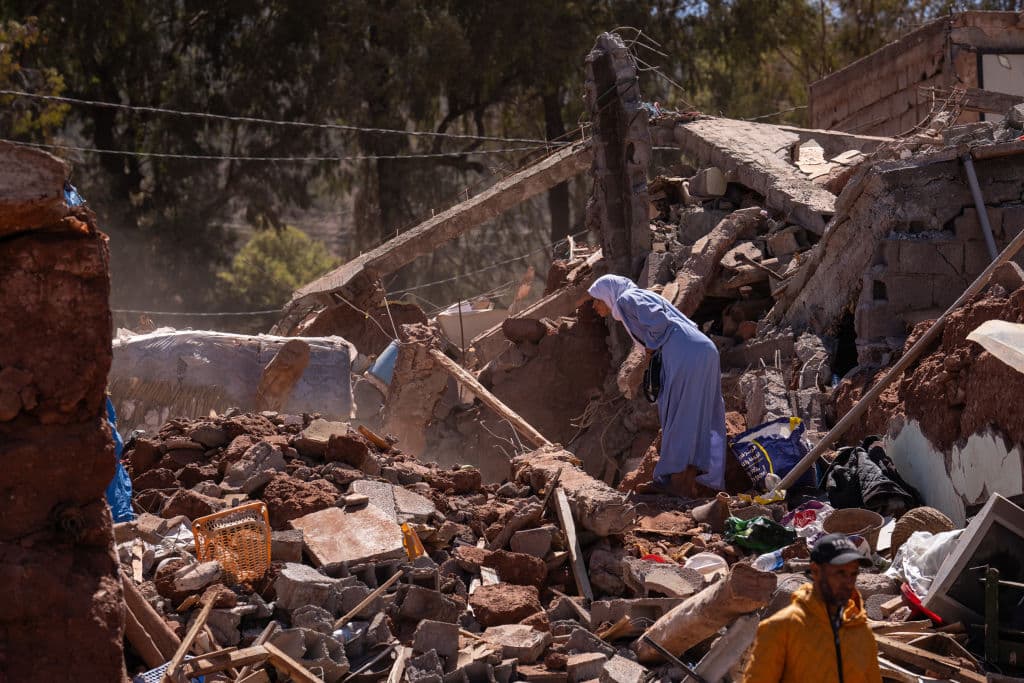TOPLINE
At least 2,000 people were killed by a magnitude 6.8 earthquake in Morocco—the country’s deadliest in 60 years—that toppled buildings and caused widespread damage southeast of Marrakesh, officials in Morocco confirmed Saturday night, as the region deals with a magnitude 3.9 aftershock.
KEY FACTS
The Royal Moroccan Armed Forces confirmed at least 2,012 people were confirmed dead and 2,059 are believed to be injured—more than 1,400 are critically injured.
The same area hit by Friday’s quake suffered a magnitude 3.9 aftershock on Sunday amid rescue and repair efforts, according to the U.S. Geological Survey, but the Associated Press reported it isn’t clear if that quake caused more damage or casualties.
Sunday’s aftershock was the second, as the U.S. Geological Survey reported the first major magnitude 4.9 aftershock 20 minutes after the original shock.
The earthquake’s epicenter occurred in the village of Iguil, near the popular Oukaimeden ski resort where strong earthquakes are “uncommon but not unexpected,” and around 50 miles from Marrakesh, according to the U.S. Geological Survey; earthquakes of this magnitude are more common near the northern part of Morocco.
The High Atlas Mountains, which are not densely populated, have experienced earthquakes in the past but the region has not seen an earthquake the size of the Friday’s since at least 1900, according to the U.S. Geological Survey.
Forbes Daily: Get our best stories, exclusive reporting and essential analysis of the day’s news in your inbox every weekday.Sign Up
By signing up, you accept and agree to our Terms of Service (including the class action waiver and arbitration provisions), and Privacy Statement.
BIG NUMBER
300,000. That’s how many people the World Health Organization estimates were impacted by Friday night’s quake. The organization added its teams are “on standby” to provide support and “ensure health services are quickly delivered where needed, including for trauma care.”
KEY BACKGROUND
The Moroccan army has been conducting search and rescue missions since the quake, and officials are working to provide food, water and shelter to those who were impacted, but the Associated Press reported some Moroccans were complaining on social networks that the government wasn’t providing as much help as it could. Shortly after the quake, President Joe Biden released a statement saying the administration had been in contact with Moroccan officials and that they are “working expeditiously to ensure American citizens in Morocco are safe, and stand ready to provide any necessary assistance for the Moroccan people.” So far, Spain has sent resources to Morocco, and France has offered assistance in search and rescue teams, NBC News reported.
TANGENT
The deadly earthquake in Morocco was likely the result of oblique reverse faulting, and as more information is available the U.S. Geological Survey expects it will be able to determine the causative fault.
FURTHER READING
NBC NEWSMorocco earthquake live updates: More than 2,000 deadAP NEWSA magnitude 3.9 aftershock rattles Morocco as rescuers seek survivors in ancient cities and townsMORE FROM FORBESAt Least 1,300 Dead From Morocco Earthquake (Updated)By Brian BushardMORE FROM FORBESPhotos: Morocco’s Devastating Earthquake, It’s Biggest In 120 YearsBy Brian Bushard
